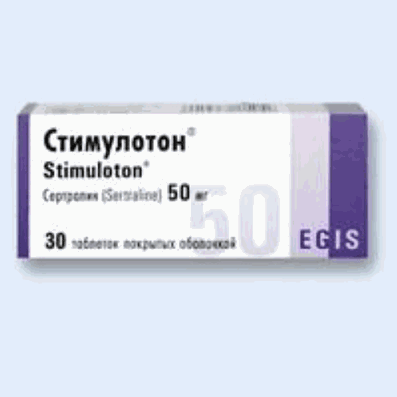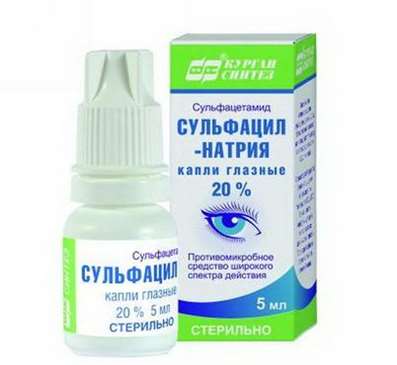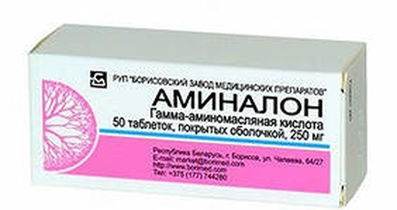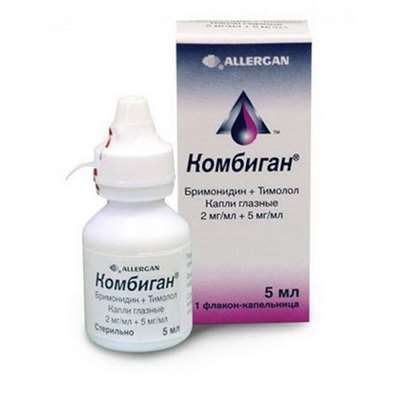Instruction for use: Aerus
I want this, give me price
Dosage form: Aerosol for inhalation dosed
Active substance: Aprotininum
ATX
B02AB01 Aprotinin
Pharmacological group
Proteolysis inhibitor [Fibrinolysis inhibitors]
Proteolysis inhibitor [Ferment and antiferments]
Proteolysis inhibitor [Antiviral (excluding HIV) means]
The nosological classification (ICD-10)
J06 Acute upper respiratory tract infections of multiple and unspecified locations: Frequent colds of viral diseases; Infections of ENT organs; Acute respiratory illness of influenza nature; Pain for colds; Acute catarrhal disease; Cold; Colds; Colds; Respiratory infection; Seasonal catarrhal disease; Seasonal colds; Pain in infectious and inflammatory diseases of the upper respiratory tract; Bacterial infections of the upper respiratory tract; Bacterial infections of the respiratory system; Viral respiratory disease; Viral respiratory tract infections; Inflammatory disease of the upper respiratory tract; Inflammatory diseases of the upper respiratory tract; Inflammatory diseases of the upper respiratory tract with difficult to separate sputum; Inflammatory respiratory disease; Secondary infections for colds; Difficult sputum separation in acute and chronic respiratory diseases; Upper respiratory tract infections; Infections of the upper respiratory tract; Respiratory tract infections; Respiratory and lung infections; Infectious-inflammatory diseases of the upper respiratory tract; Infectious-inflammatory diseases of the upper respiratory tract and ENT organs; Infectious-inflammatory diseases of the upper respiratory tract in adults and children; Infectious-inflammatory diseases of the upper respiratory tract; Infectious inflammation of the respiratory tract; Respiratory tract infection; Qatar upper respiratory tract; Catarrh of the upper respiratory tract; Catarrh of the upper respiratory tract; Catarrhal phenomena from the upper respiratory tract; Cough in diseases of the upper respiratory tract; Cough for colds; ARVI; ARI; ARI with phenomena of rhinitis; Acute respiratory infection; Acute infectious-inflammatory disease of the upper respiratory tract; Acute respiratory disease; Persecution in the throat or nose; Respiratory and viral infections; Respiratory diseases; Respiratory infections; Recurrent respiratory tract infections; Secondary infections with influenza; Influenza states; Feverish conditions for influenza
J11 Influenza, virus not identified: Influenza; Influenza in the early stages of the disease; Influenza in children; cold in the chest; Begins flu-like condition; Acute disease parainfluenza; parainfluenza; parainfluenza state; influenza epidemics; The pains of the influenza
J22 Acute respiratory infection of lower respiratory tract, unspecified: Bacterial respiratory disease; Bacterial infections of the lower respiratory tract; Bacterial infections of the respiratory system; Viral respiratory disease; Viral respiratory tract infections; Inflammatory respiratory disease;; Difficult sputum separation in acute and chronic respiratory diseases; Respiratory tract infections; Respiratory and lung infections; Lower respiratory tract infections; Infections of the lower respiratory tract; Infectious inflammation of the respiratory tract; Infectious diseases of the respiratory tract; Infectious diseases of the lungs; Infectious diseases of the respiratory system; Respiratory tract infection; Cough for colds; Pulmonary infection; Acute respiratory tract infection; Acute respiratory viral infection; Acute inflammatory airway disease; Acute respiratory disease; Respiratory infection; Respiratory and viral infections; Respiratory syncytial viral infection in young children; Respiratory diseases; Respiratory infections
Composition
Aerosol for inhalation dosage 1 dose
active substance: Aprotinin, concentrated solution * 0.00043 ml
(In terms of aprotinin - 85 KIE (kallikrein inhibitory units) (0.013 mg)
As an auxiliary substance, the concentrated solution of aprotinin contains purified water (EurPh)
Auxiliary substances: propellant HFC-134A (1,1,1,2-tetrafluoroethane) 0.045 ml; Mint pepper leaves oil - 0.000045 ml; Ethanol 96% - 0.0075 ml; Glycerol 96% - 0.0035 ml.
Description of dosage form
A clear, colorless or slightly yellow solution.
Pharmachologic effect
Mode of action - Antiviral, anti-inflammatory, inhibitory proteolysis.
Pharmacodynamics
The main active substance of the drug AERUSŪ-aprotinin is a low molecular weight natural polypeptide (58 amino acids) isolated from light bovine animals and has an inhibitory effect on proteolytic enzymes. Aprotinin inhibits trypsin, chymotrypsin, plasmin, plasma and tissue kallikrein, mast cell tryptase, cathepsin, leukocyte elastase (proteinase 3), prostasin and other proteases due to the formation of stable complexes with them.
Aprotinin has a double action. First, it has an antiviral effect by inhibiting the proteolysis of a specific viral protein, which leads to direct inhibition of the reproduction of the virus. Secondly, aprotinin reduces the level of virus and bacterial induced proteolysis in tissues, preventing the development of pathological inflammatory processes that result from an excess of proteases and a lack of their inhibitors.
Aprotinin reduces the concentration of reactive oxygen species in the focus of viral inflammation by inhibiting the proteolytic formation of xanthine oxidase (CO). The inhibition of the KO-dependent pathway of peroxidation leads to a decrease in the pathological inflammatory processes that form in the respiratory organs in viral infections.
Aprotinin inhibits the activation of a number of cytokines and chemokines, inhibits tissue migration of leukocytes, which has a pronounced anti-inflammatory effect in the focus of infection.
Inhalations of aerosol aprotinin do not exert local toxicity in respiratory organs. The drug does not cause allergic reactions and signs of local irritating effect in contact with mucous membranes of the respiratory tract.
Aerosol inhalations of aprotinin do not inhibit the development of antiviral immunity in infected patients.
Pharmacokinetics
Aprotinin passes through the bloodstream into the kidneys. In kidney lysosomes, aprotinin molecules are completely cleaved into shorter peptides and amino acids, after which the products are excreted in the urine. T1 / 2 aprotinin from the blood flow is about 2 hours. There is no excretion of unchanged aprotinin by the kidneys even at high doses of administration - about 1 million KIE.
Indications of the drug Aerus
Treatment of infectious and inflammatory diseases of viral etiology (influenza and other acute respiratory viral infections).
Contraindications
Hypersensitivity to aprotinin;
Syndrome of disseminated intravascular coagulation;
Allergic reactions (including on the protein of cattle);
pregnancy;
Lactation period;
Children under 18 years of age (due to lack of clinical experience in children).
Side effects
In comparison with parenteral administration with inhalation administration of aprotinin, the risk of side effects is unlikely.
From the CVS: lowering blood pressure, tachycardia, pale skin.
From the side of the central nervous system: a psychotic reaction, hallucinations, confusion.
Allergic reactions: rash, rhinitis, conjunctivitis, anaphylactic reactions (up to anaphylactic shock).
From the side of the digestive system: nausea, vomiting.
Local reactions: dryness, bleeding of mucous membranes of the respiratory tract.
Interaction
Aprotinin inhibits the action of streptokinase and urokinase, therefore AerusŪ should not be used with these drugs. Aprotinin should be mixed with caution mixed with other drugs, especially with beta-lactam antibiotics, heparin, because of the possibility of their direct chemical interaction.
Dosing and Administration
Inhalation. For 1 inhalation dose (1 dose of 85 KIE) in each nasal passage every 2-4 hours (800-2000 KIE / day). The maximum daily dose is 50-65 KIE / day / kg. The basic recommended course of inhalations: inhalation through the nose, exhalation through the mouth, with viral inflammation in the nasal cavity; Inhalation through the mouth and exhalation in the nose - in the presence of symptoms of viral inflammation in the oropharynx, trachea and bronchi. A combined inhalation of 1 dose in the nasal passages and through the mouth is possible. The duration of the course is from 3 to 8 days, depending on the severity of the disease, with a frequency of every 2-4 hours.
Directions for proper use
Before the first use, press the metering valve twice.
Before each use it is necessary to observe the following procedure:
- remove the protective cap and shake the can;
- breathe deeply;
- keep the inhaler in the position shown in Figures 1 and 2, inhale through the mouth with a mouthpiece, compress lips or, if inhaled through the nose, the nose nozzle should be inserted into the nostril;
- simultaneously with a deep breath, energetically push the metering valve, which will allocate 1 aerosol dose. For 1-2 seconds to hold your breath, then take out the mouthpiece from the mouth, nose from the nose and exhale;
- after use, insert the protective cover back onto the mouthpiece, which is installed on the dosing head to protect it from damage;
- if the drug has not been used for 3 days, it is necessary to press the metering valve 1 time before the new application.
Special instructions
Oral and nasal nozzles should be kept clean, they can be washed with warm water or 40% aqueous ethanol solution. If soap or other cleaning agents are used to flush the nozzle, then the nozzle should be rinsed thoroughly with a stream of water.
Rotary and nasal nozzles from the AERUSŪ kit should not be used with other inhalation solutions, and AERUSŪ should not be used with other nozzles.
When an anaphylactic reaction to aprotinin occurs, conventional measures are taken (epinephrine, prednisolone, plasma substitutes). Particular attention is needed for patients prone to allergies, possibly prescribing antihistamines.
Release form
Aerosol for inhalation dosed, 85 KIE / dose. For 35,000 KIU (350 doses) or 25,000 KIU (250 doses) in a metal (aluminum) tank with a capacity of 30 or 20 ml, respectively, with a dosing device (valve). One cylinder with a set of 2 nozzles for nasal and oral use with safety caps is placed in a plastic contour mesh package, and then packaged in a cardboard box.
Manufacturer
VAKE, Spol. Sr.o., Czech Republic / WAKE spol.s.r.o., Czech Republic.
Address: 61168629, the Czech Republic.
Registration certificate issued
OJSC "PLAST", 123308, Russia, Moscow, prosp. Marshal Zhukov, 1.
Address for sending claims:
JSC "PLAST", Russia,
123308, Moscow..
A comment
In this fundamentally new form and new composition, the main active substance is the natural antiproteinase polypeptide-aprotinin.
Aprotinin is used in medical practice for more than 50 years and is recommended for use in doses for intravenous administration of 100,000 to 700,000 IUI. One dose of AerosŪ aerosol is 85 KIE, and the recommended daily dose does not exceed 2000 KIE.
The sections "Contraindications" and "Side effects" of the instructions reflect a number of effects that could have occurred with intravenous administration of aprotinin in doses exceeding the recommended dose for the preparation of AERUSŪ thousands of times.
Dosage Aerosol Aerosol is a topical preparation, therefore the risk of side effects with inhaled aprotinin is almost impossible.
Given that all components in the formulation of the drug AERUSŪ are substances of natural origin and, as already mentioned, are applicable in the local mode in minimal doses, aerosol AERUSŪ can be recommended as a prophylactic as well as the drug used for the first symptoms Influenza and ARVI.
Conditions of supply of pharmacies
On prescription.
Storage conditions of the drug Aerus
In dry, the dark place at a temperature of no higher than 25 ° C.
Keep out of the reach of children.
The shelf life of the drug Aerus
3 years.
Do not use beyond the expiration date printed on the package.

 Cart
Cart





